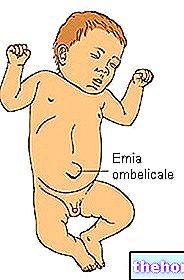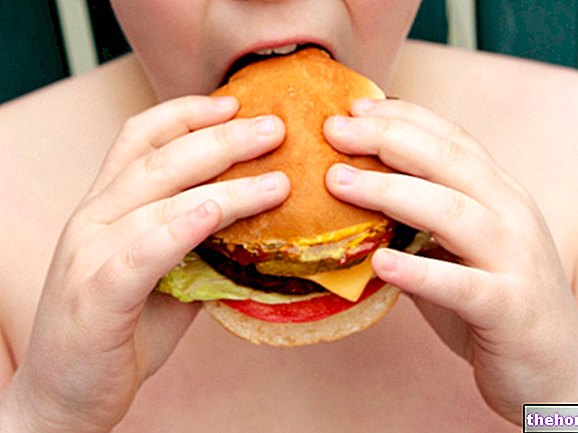
Fever is not a disease but a symptom; as such, it can be caused by a trivial reason or underlying a serious condition, as well as, at times, have causes that are not immediately identifiable.
There is a very simple tool to identify the likelihood of facing a serious pathology in the case of a febrile child, and it is based on the use of the three colors of the traffic light: green, yellow and red.
Children with fever and signs and / or symptoms unique to the green column are at low risk; children with one or more yellow column symptoms are at intermediate risk and children with one or more red column symptoms are at high risk.
FEVER IN THE CHILD - THE GREEN LIGHT
The baby carries out his normal activities, is happy / smiling, awake and / or easily awakened, does not cry and when he does, crying is normal
The skin and eyes are normal and the mucous membranes are moist
No signs or symptoms of yellow or red
FEVER IN THE CHILD - THE YELLOW TRAFFIC LIGHT
Breath
He is listless, dejected; awakens but with fatigue or if stimulated for a long time; does not smile.
Enlargement of the nasal fins; tachypnea (increased respiratory rate> 50 breaths per minute between 6 and 12 months;> 40 / min over 12 months); drooling (loss of saliva from the mouth).
Dry mucous membranes; unsatisfactory nutritional status; oliguria (very little urine throughout the day); capillary refill time * ≥2 seconds.
Fever for more than 5 days; joint or limb swelling; lameness; adenopathy (presence of painful masses, especially on the sides of the neck, or any mass greater than 2 cm).
FEVER IN THE CHILD - THE RED LIGHT
It responds poorly to stimuli; fails to wake up or falls asleep again immediately; faint, high-pitched, continuous weeping.
Presence of groan on inhalation; increased respiratory rate above 60 breaths per minute; thoracic retractions.
Reduced skin turgor
Age 0-3 months: temperature ≥ 38 ° C
Age 3-6 months: temperature ≥ 39 ° C
Stiffness in the nape neurological signs; convulsions; biliary vomiting (green).
* By applying pressure to the patient's palm or fingertip, the blood is "squeezed" out of the underlying tissues. Releasing the pressure, the skin appears lighter, but the blood returns to perfuse the tissues, restoring the original color. The capillary filling time is precisely the time in which the normal skin color returns: if greater than 2 seconds, the test is defined positive.
of gravity (the traffic light), then again to look for the cause of the fever and specific signs and symptoms. The heart rate (pulse) and respiratory rate must then be measured, the capillary filling time (by pressing the surface of the nails for a few seconds and seeing how quickly they recolor after releasing the grip), and the state of hydration evaluated.
Sore throat, cough and airway congestion, conjunctivitis, muscle aches, loss of appetite, prostration.
related to childhood
Skin rashes (macules, papules or vesicles), whether or not associated with sore throat, cough and congestion of the airways, muscle aches, loss of appetite, prostration.
Meningococcus
(Neisseria Meningitidis)
Erythema of the skin, mainly localized on the extremities, which does not disappear when pressed with the finger and is characterized by reddish lesions with a diameter greater than 2 millimeters; suffering child; capillary filling time ≥2 seconds; stiffness of the nape; impaired state of consciousness; convulsions; headache; nausea; vomiting unrelated to meals
Focal neurological signs (affecting only one sphere of behavior or movement); impaired state of consciousness; convulsions
Tachypnea; chest retractions; cyanosis (bluish color of the skin); enlargement of the nasal fins
urinary
He retched; lack of appetite; lethargy; irritability; abdominal pain; dysuria (pain and / or burning when urinating); hematuria (blood in the urine)
Septic arthritis
and / or osteomyelitis
Joint swelling ache; lameness
Fever lasting more than 5 days plus four of the following:
- Bilateral conjunctivitis without pus
- Cheilitis (inflammation of the lips) -mucositis (inflammation of the lining of the mouth)
- Edema (swelling), erythema, peeling of the skin of the extremities
- Volumetric increase and pain of the cervical lymph nodes
In summary, when faced with a child with a fever, we behave in the following way:
- if the symptoms present indicate a potential danger to life, go immediately to the emergency room. If this does not happen, the severity of the signs and symptoms must be assessed according to the "traffic light" rules:
- with green symptoms, the child can be treated at home, with yellow symptoms or in the absence of a diagnosis, he must be sent to the pediatrician and, with at least one red symptom, he must be sent to the pediatrician urgently (within 2 hours).




























